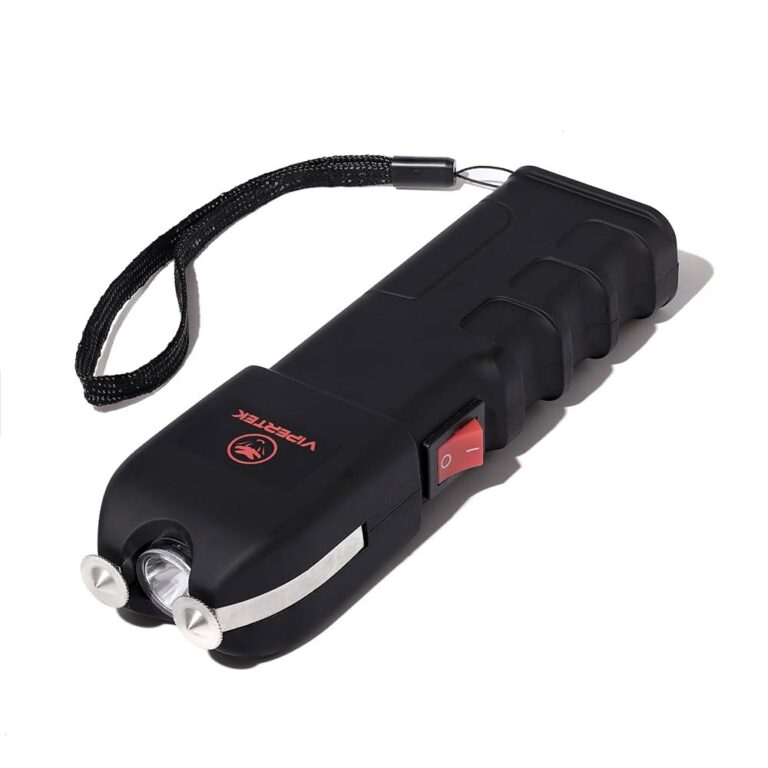Table of Contents
- Assessing the Situation and Ensuring Personal Safety
- Properly Securing and Storing Your Stun Gun After Use
- Documenting the Incident and Reporting to Authorities
- Seeking Medical Attention and Legal Guidance When Necessary
- Insights and Conclusions
Assessing the Situation and Ensuring Personal Safety
Immediately after deploying a stun gun, your safety becomes the top priority. First, take a moment to quickly assess your surroundings for any ongoing threats or additional aggressors. Stay alert to environmental hazards such as traffic, unstable ground, or bystanders who could inadvertently cause harm. It’s crucial to maintain a safe distance from the disoriented attacker; they could recover quickly or pose an unexpected danger. If you are in a public place, look for signals of help-nearby security personnel, crowded areas, or open businesses where you can find assistance.
Once you’ve ensured that immediate danger has passed, focus on protecting yourself by following these steps:
- Move to a safe location: Put physical barriers such as walls or vehicles between you and the threat.
- Call for help: Dial emergency services or alert someone nearby about what happened.
- Stay calm and composed: Keeping a clear head allows you to respond effectively if the situation escalates again.
- Do not remove your eyes from your surroundings: Remaining vigilant deters further attacks and helps you identify additional risks.
Properly Securing and Storing Your Stun Gun After Use
Once you’ve used your stun gun, it’s crucial to ensure it’s no longer active to prevent accidental discharge. Begin by safely switching off the device, ideally in a well-lit area where you can clearly see the control switch. If your model features a safety lock, engage it immediately after use. This preventive step protects both you and others from unintended activation. Additionally, avoid touching the electrodes even after usage, as residual charge might still pose a minor risk.
Proper storage not only extends the lifespan of your stun gun but also guarantees it’s ready for future protection needs. Keep it in a secure, dry location away from children and unauthorized users. Consider options such as:
- Dedicated cases or holsters that provide quick access while preventing exposure to dust or moisture
- Locked compartments for an extra layer of security in your home or vehicle
- Regular battery checks to maintain optimal performance when you need it most
Remember, responsible ownership means treating your stun gun with care and respect, just like any other personal safety tool.
Documenting the Incident and Reporting to Authorities
Once the immediate threat has been neutralized, it’s crucial to document every detail of the incident as accurately as possible. Take notes or record your memory of the event, focusing on key elements such as the time, location, description of the assailant, the sequence of events, and the specifics of your stun gun usage. If possible, take photographs of the scene and any visible injuries sustained during the encounter. This clear and thorough documentation will serve as important evidence and help provide a factual account when recounting the incident to authorities or legal entities.
Next, promptly report the incident to the appropriate authorities. Contact the local police department to file a detailed report, and be prepared to provide all your documentation including witness information if any. Reporting not only supports your case but also contributes to community safety efforts by alerting law enforcement to potential threats. Remember to request a copy of the official report for your records, as it may be necessary for insurance claims or future legal proceedings.
Seeking Medical Attention and Legal Guidance When Necessary
Immediately after using a stun gun, your health takes priority. Even if the individual who was stunned appears to recover quickly, it’s crucial to observe for any delayed symptoms such as irregular heartbeat, prolonged confusion, or muscle pain. Seeking prompt medical evaluation ensures that any underlying complications are addressed swiftly, minimizing long-term risks. Remember, stun guns can impact people differently depending on factors like age, health conditions, and medication-medical professionals are best equipped to make that assessment.
On the legal front, documenting the incident and consulting an attorney can shield you from potential misunderstandings or legal repercussions. Protect yourself by maintaining detailed records including time, location, the nature of the threat, and any communications involved. Here are some essential steps to consider:
- Report the incident to law enforcement immediately to establish an official record.
- Obtain witness statements if applicable, to corroborate your account.
- Consult with a qualified attorney who can guide you through local laws about self-defense and stun gun use.
Insights and Conclusions
In the heat of a self-defense situation, using a stun gun can provide a crucial moment of safety. But what you do immediately afterward is just as important as the act itself. By staying calm, ensuring your own safety, calling for help, and seeking medical attention if needed, you can effectively manage the aftermath and protect yourself further. Remember, being prepared and informed not only empowers you in the moment but also helps you navigate the critical minutes that follow. Stay safe and stay vigilant.Check Our Other Blogs
- StunGun – Your Trusted Source for Stun Guns, Laws, and Self-Defense Tips
- PepperSprayLaws – Your Trusted Resource for Pepper Spray Information
- StunGunLaws – Your Trusted Guide to Stun Gun Legality and Safety



